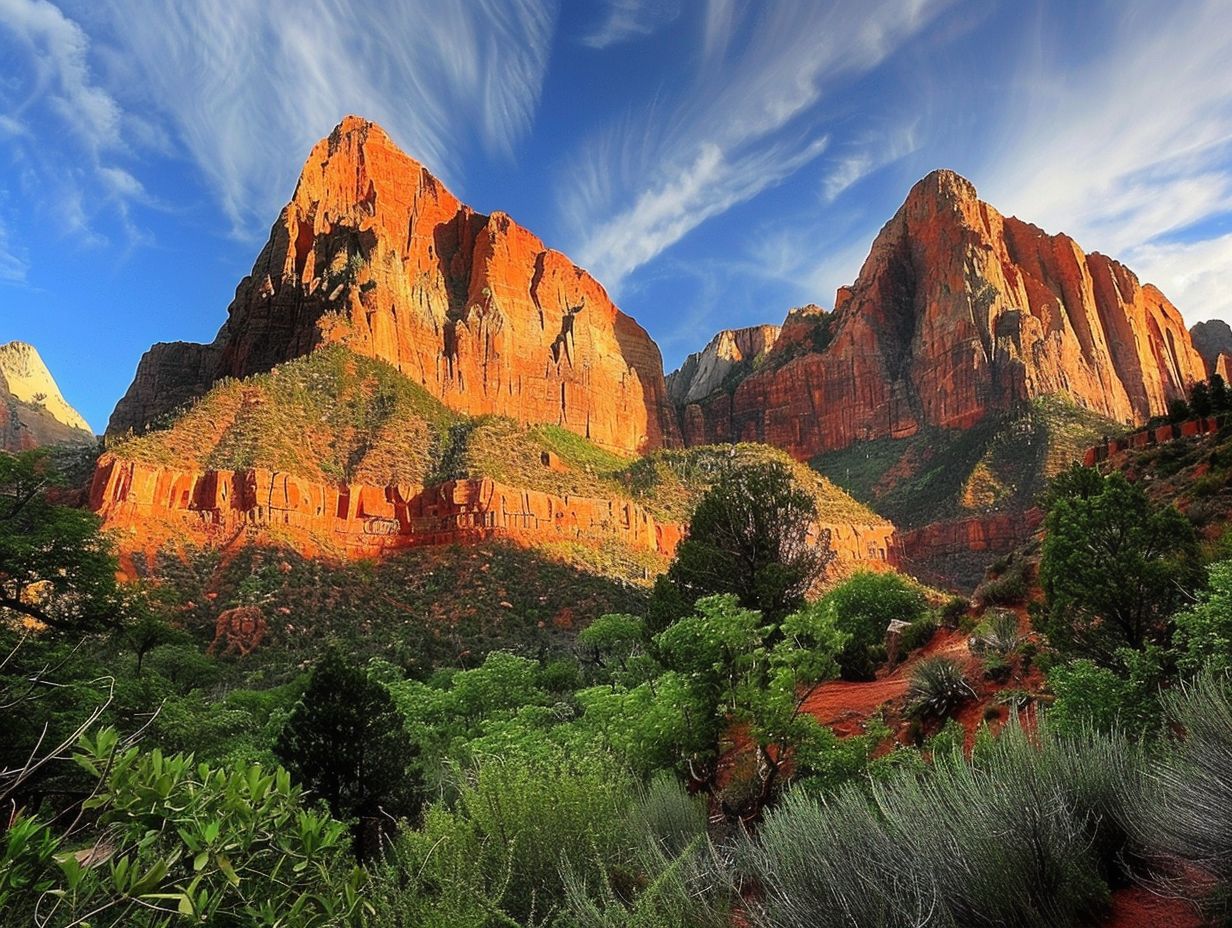Zion National Park is a natural wonder that boasts a remarkable diversity of wildlife, from the iconic Desert Bighorn Sheep to the elusive Mountain Lion. This blog post will delve into the fascinating array of animals that call Zion home, providing insights into their unique characteristics and habitats.
The Iconic Residents of Zion National Park
Desert Bighorn Sheep
One of the most recognizable animals in Zion National Park, the Desert Bighorn Sheep are a true symbol of the park’s rugged beauty. These majestic creatures, with their impressive curved horns, can be spotted grazing on the park’s grassy slopes, particularly during the cooler hours of the day. Their ability to navigate the steep, rocky terrain with ease is a testament to their remarkable adaptations.
Mountain Lion
Elusive and powerful, the Mountain Lion, also known as the cougar or puma, is one of the largest predators in Zion National Park. These solitary felines roam the higher elevations of the park, hunting a variety of prey, including deer and small mammals. Spotting a Mountain Lion in the wild is a rare and thrilling experience for visitors.
Mule Deer
Ubiquitous throughout the park, the Mule Deer is a common sight for visitors. These deer, with their distinctive large ears and antlers, can be observed grazing in meadows, browsing on vegetation, and even wandering through the park’s developed areas.
Reptiles and Amphibians of Zion National Park

Western Rattlesnake
The Western Rattlesnake is the only venomous snake found in Zion National Park. These reptiles can be seen basking on the park’s red rocks or slithering across the landscape in search of prey. While they should be observed from a safe distance, the Western Rattlesnake plays an important role in the park’s ecosystem.
Desert Tortoise
The Desert Tortoise, a federally protected species, can be found in the park’s desert areas. These slow-moving, long-lived creatures are adapted to the harsh desert environment and can live up to 80 to 100 years.
Rare and Endangered Birds of Zion National Park
California Condor
One of the rarest birds in North America, the California Condor, has been reintroduced to Zion National Park. These massive, soaring birds with a wingspan of up to 9.5 feet are a true sight to behold as they glide over the park’s towering cliffs.
Peregrine Falcon
The Peregrine Falcon, known for its incredible speed and hunting prowess, can be spotted in Zion National Park. These birds of prey have made a remarkable comeback after being endangered, and their presence in the park is a testament to the success of conservation efforts.
Bald Eagle
While not a common sight, the majestic Bald Eagle has been observed in Zion National Park, particularly during the winter months when they may migrate to the area in search of food.
Other Notable Zion National Park Animals
Ringtail Cat
The Ringtail Cat, also known as the “miner’s cat,” is a small, nocturnal mammal that can be found in the park’s rocky areas. These agile creatures are known for their distinctive ringed tails and are often spotted near human-made structures.
Rock Squirrel
The Rock Squirrel is a common sight in Zion National Park, scurrying across the rocks and foraging for food. These lively rodents are an important part of the park’s ecosystem, serving as a food source for larger predators.
Beaver
The Beaver, a keystone species, can be found in the park’s waterways, where they build their intricate dams and lodges. These industrious animals play a crucial role in shaping the park’s riparian habitats.
Responsible Wildlife Viewing in Zion National Park
To ensure the safety of both visitors and wildlife, it is essential to follow a few simple guidelines when observing the animals in Zion National Park:
- Maintain a safe distance from all animals, giving them ample space to move and behave naturally.
- Refrain from feeding or touching the wildlife, as this can disrupt their natural behaviors and put them at risk.
- Properly dispose of all food and waste to avoid attracting animals to developed areas.
- Report any wildlife sightings or concerns to park rangers, who can provide guidance and ensure the well-being of the park’s animal residents.
By following these guidelines, visitors can enjoy the incredible wildlife of Zion National Park while respecting the delicate balance of the ecosystem.
Conclusion
Zion National Park is a true haven for a diverse array of wildlife, from the iconic Desert Bighorn Sheep to the elusive Mountain Lion. Exploring the park’s varied habitats and observing these remarkable creatures in their natural environment is a truly awe-inspiring experience. By understanding and respecting the park’s wildlife, visitors can play a vital role in preserving the natural wonders of Zion for generations to come.

